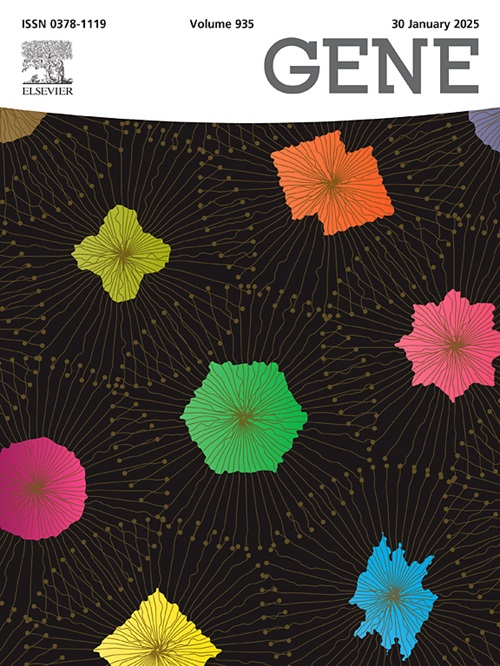Comparative chloroplast RNA editing analysis in wild and genetically diverse niger (Guizotia abyssinica L.F. Cass) genotypes reveal domestication-driven divergence and wild-specific resilience
IF 2.4
3区 生物学
Q2 GENETICS & HEREDITY
引用次数: 0
Abstract
RNA editing is a key post-transcriptional mechanism that alters RNA sequences, thereby influencing gene expression, protein function, and stress adaptability in plants. Despite extensive characterization in model species, its prevalence and functional significance in underutilized crops remains limited. Here, we present the first comprehensive analysis of chloroplast RNA editing in Guizotia abyssinica (niger), an underutilized but economically important oilseed crop, and its wild relative G. scabra (GS), along with three geographically diverse domesticated genotypes, JNS-28 (India), ETH-19 (Ethiopia), and USDA-15 (USA). Using high-throughput Illumina RNA-sequencing and REDItools, 404 RNA editing sites were identified in GS, followed by 304 in USDA-15, 220 in ETH-19, and 166 in JNS-28, with C-to-U conversions being most prevalent. Homology-based analyses revealed putative PPR, MORF, and OZ1 family members, whose expression patterns, analyzed by DESeq2, showed significant divergence between wild and cultivated genotypes, reflecting domestication and environment-driven selection. Phylogenetic analyses further suggested diversification of RNA editing factors in G. abyssinica compared to other oilseed and model species. Notably, domestication has reduced RNA editing diversity in cultivated genotypes, while the wild G. scabra retained extensive editing patterns with potential adaptive significance These findings illuminate organellar transcriptomic plasticity in niger, establish a molecular link between RNA editing and stress resilience, and highlight novel targets for breeding and biotechnological improvement of this underutilized oilseed crop.

野生和遗传多样性黑(Guizotia abyssinica L.F. Cass)基因型的叶绿体RNA编辑比较分析揭示了驯化驱动的差异和野生特异性恢复力。
RNA编辑是一种关键的转录后机制,它改变了RNA序列,从而影响了植物的基因表达、蛋白质功能和逆境适应性。尽管在模式物种中进行了广泛的表征,但其在未充分利用作物中的流行程度和功能意义仍然有限。在这里,我们首次全面分析了未被充分利用但经济上重要的油籽作物贵州(尼日尔)及其野生亲缘种贵州(GS)的叶绿体RNA编辑,以及三种地理上不同的驯化基因型:JNS-28(印度)、ETH-19(埃塞俄比亚)和USDA-15(美国)。使用高通量Illumina RNA测序和REDItools,在GS中鉴定出404个RNA编辑位点,其次是USDA-15中的304个,ETH-19中的220个,JNS-28中的166个,其中C-to-U转化最为普遍。同源性分析显示,PPR、MORF和OZ1家族成员的表达模式在野生和栽培基因型之间存在显著差异,反映了驯化和环境驱动的选择。系统发育分析进一步表明,与其他油籽和模式物种相比,深海草具有多样化的RNA编辑因子。值得注意的是,驯化降低了栽培基因型的RNA编辑多样性,而野生的G. scabra保留了广泛的编辑模式,具有潜在的适应性意义。这些发现阐明了尼日尔的细胞器转录组可塑性,建立了RNA编辑与逆境恢复能力之间的分子联系,并为这种未被充分利用的油籽作物的育种和生物技术改进提供了新的靶点。
本文章由计算机程序翻译,如有差异,请以英文原文为准。
求助全文
约1分钟内获得全文
求助全文
来源期刊

Gene
生物-遗传学
CiteScore
6.10
自引率
2.90%
发文量
718
审稿时长
42 days
期刊介绍:
Gene publishes papers that focus on the regulation, expression, function and evolution of genes in all biological contexts, including all prokaryotic and eukaryotic organisms, as well as viruses.
 求助内容:
求助内容: 应助结果提醒方式:
应助结果提醒方式:


